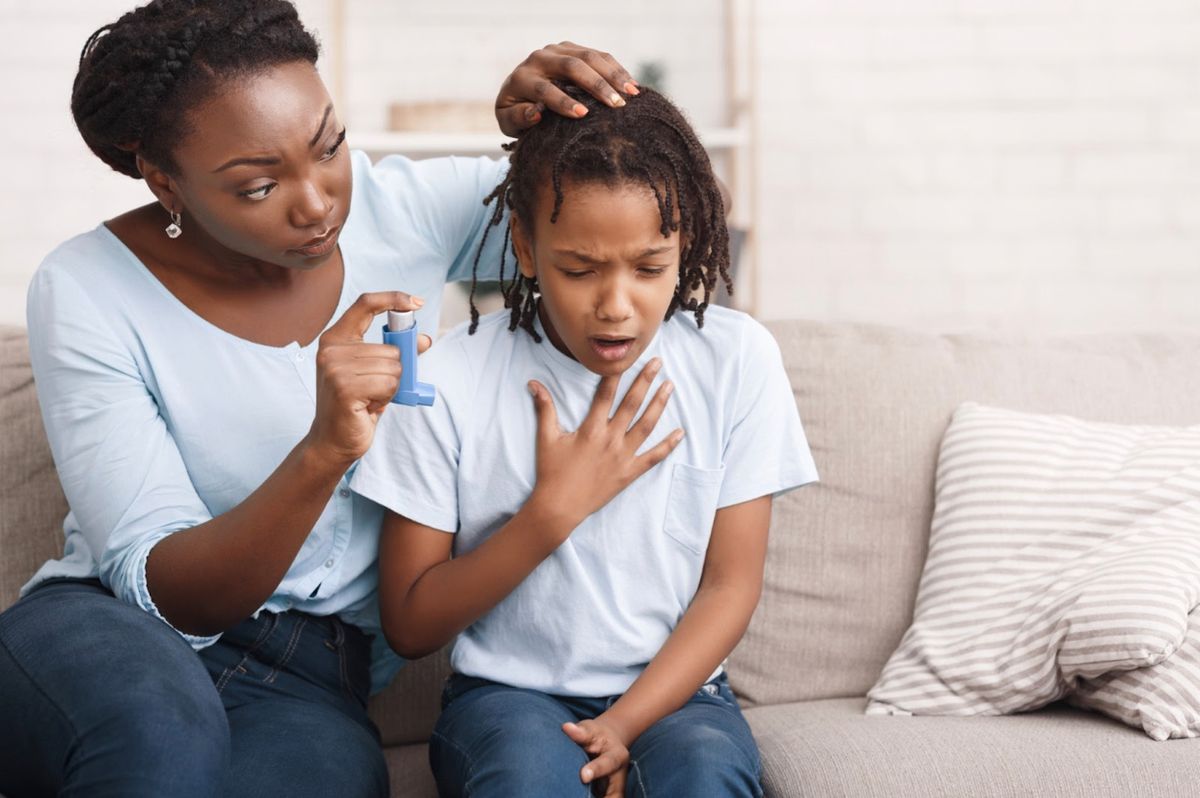If you're a parent managing your child's asthma, staying informed about the latest advancements can empower you to make the best decisions for their health. This article offers a research-informed overview of pediatric asthma, including recent developments in treatment and care.

Interested in joining a clinical trial for Asthma?
Our clinical trial platform can connect you with trials that match your needs and eligibility. Take the first step towards accessing cutting-edge treatments and start your search today to discover the potential benefits of participating in clinical trials.
Updates in Pediatric Asthma Treatment (2025)
Recent advancements in pediatric asthma care have introduced more tailored approaches for children with moderate to severe symptoms. While these options may not be suitable for everyone, understanding what's available can help parents have informed conversations with their healthcare providers.
- Biologic therapies (injections): Powerful new biologics target specific inflammatory pathways. For example, benralizumab (Fasenra) was recently approved to treat severe eosinophilic asthma in children as young as 6 years old. Other biologics, such as mepolizumab, dupilumab, and omalizumab, are also approved for children aged 6 and above with severe asthma. These are given by injection every few weeks and used when inhalers aren’t enough. They require a specialist but can significantly reduce attacks and steroid use.
- New inhalers and combinations: Recent guideline updates (GINA 2023) now include more options. For example, low-dose inhaled steroids (ICS) combined with long-acting bronchodilators (LABAs) are being used earlier in treatment. The GINA 2023 guidelines even list mepolizumab as a preferred option for severe pediatric cases. In adults, a new rescue inhaler (Airsupra) combining albuterol and budesonide has been approved, demonstrating improved flare control. While it’s only for adults, it reflects a growing focus on treating both symptoms and inflammation.
- Nasal swab test for asthma type: A simple nasal swab developed by researchers can help identify a child’s asthma “endotype” (T2-high, T17-high, or low-low). This matters because biologics are more effective when matched to the right type. In the future, this could reduce “trial and error” and lead to more personalized treatment.
- Guideline changes: New global guidelines (GINA 2023) emphasize combination therapies and individualized plans. For instance, they now prefer using a combined anti-inflammatory reliever (low-dose ICS + formoterol) over just a short-acting bronchodilator (SABA) for kids 6 and older. U.S. guidelines (NAEPP 2020) are beginning to align. Make sure your child has an updated Asthma Action Plan and check that inhaler technique and medication schedules are being followed — poor technique or missed doses are common reasons for worsening asthma.
Note: Always consult your child's healthcare provider before making any changes to their asthma treatment plan.
Supporting Asthma Management Through Digital Tools
Digital tools are increasingly becoming a valuable part of asthma care, especially for families looking to stay on top of symptom tracking and medication adherence.
- Apps and digital diaries: Apps like AsthmaMD or MyAsthma allow parents and kids to track symptoms, medications, and triggers. These logs can help spot patterns and improve conversations with doctors.
- Smart inhalers and sensors: Devices like Propeller Health attach to inhalers and track usage, sending reminders and alerts. These can improve adherence and flag early warning signs. New wearable patches that detect wheezing through deep learning have also been developed. These small patches could one day alert caregivers or doctors in real time.
These tools are not a replacement for medical care, but they can support better day-to-day management and improve communication between families and healthcare providers.
Reducing Environmental Triggers
Even the best medications work better when asthma triggers are controlled. Here are practical ways to help:
- Control indoor allergens: Use dust-mite–proof covers, wash bedding weekly in hot water, and maintain indoor humidity below 50%. If pets are a trigger, limit bedroom access and groom them regularly. Avoid carpeting and heavy curtains when possible.
- Air quality awareness: Use HEPA air purifiers indoors and check outdoor air quality with tools like the EPA’s AirNow app. On days with high pollen or smoke, keep windows closed and run the air conditioner if possible.
- Avoid smoke exposure: Smoking of any kind — tobacco, cannabis, or vaping — is harmful. Even thirdhand smoke (residue on surfaces) can affect children. E-cigarette vapor can also trigger asthma symptoms, so it's best to keep all smoking outside and away from children.
- Watch for medication effects: Oral steroids can affect bone health and growth over time. Newer inhaled options reduce this risk, but growth should still be monitored during regular check-ups.
School and Community Support
Because kids spend much of their day at school, proper asthma support there is crucial:
- Self-carry and stock inhalers: All 50 states allow students to carry their own prescribed inhalers with a doctor’s note. About half also permit schools to keep a stock albuterol inhaler for emergencies. Check your state’s rules and speak with the school nurse about your child’s Asthma Action Plan.
- Asthma-Friendly Schools: The Asthma-Friendly Schools Initiative by the American Lung Association helps schools implement better asthma care — such as staff training, proper ventilation, and safe cleaning practices.
- Talk to the school team: Ensure teachers, coaches, and staff are aware of your child’s needs, can access inhalers, and know what to do during an asthma episode.
Standard Approaches to Asthma Treatment in Children
Even with new options, core treatment strategies remain essential:
- Long-term control medications: Most kids with persistent asthma use daily inhaled corticosteroids. Other long-term options include leukotriene modifiers (like montelukast) or long-acting bronchodilators such as tiotropium (approved for kids 6+).
- Quick-relief medicines: Short-acting bronchodilators like albuterol are used for sudden symptoms or before exercise. Proper use is important — teach your child how to use the inhaler correctly and always have one on hand.
Make sure your child has a personalized Asthma Action Plan. These plans show what medicines to take daily, how to adjust for symptoms, and when to seek emergency help.
Clinical Research Opportunities for Families
For families open to exploring emerging treatment options, participating in a clinical trial may offer a unique opportunity to support medical research and access new forms of care under expert supervision.
You can explore currently enrolling studies for children and adolescents with asthma on our platform
Explore Pediatric Asthma TrialsSome studies may offer coverage of travel costs or other forms of compensation for time and participation, depending on the specific trial and location. While this should never be the main reason for joining a study, it can help ease the logistics for families interested in contributing to research.
Each study is overseen by qualified medical professionals and follows strict safety protocols. Participation is entirely voluntary.
Community Connection Matters
Joining community support groups—online or locally—can be a great way to share experiences, stay informed, and help your child feel understood. These spaces offer emotional and practical support to families navigating similar paths.
Final Note
This article is intended as a general overview of current knowledge and emerging trends in pediatric asthma care. It should not be interpreted as medical advice or a recommendation of any specific treatment.
Always speak with your child’s doctor to determine what approach best fits their individual health needs.
